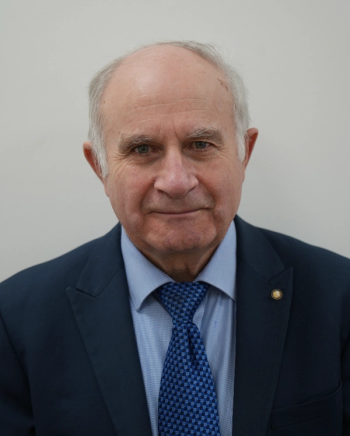
Best of the Week: Wearables Technology, FT-IR Spectroscopic Imaging
Key Takeaways
- Wearable vibrational spectroscopy enables real-time, non-invasive monitoring through advances in flexible photonics, AI, and IoT connectivity, with applications in health, safety, and environmental monitoring.
- FT-IR spectroscopic imaging, especially in ATR mode, advances biopharmaceutical research by revealing protein stability and aggregation under realistic conditions.
Top articles published this week include a two-part interview with Sergei Kazarian and Bernadette Byrne of Imperial College London, an inside look at wearables technology, and a tribute to Phil Williams, a pioneer of near-infrared (NIR) spectroscopy.
This week, Spectroscopy published a variety of articles highlighting recent studies in several application areas. Key techniques highlighted in these articles include near-infrared (NIR) spectroscopy and Fourier transform infrared (FT-IR) spectroscopy. Happy reading!
Wearable vibrational spectroscopy is changing analytical science by shifting spectroscopy from the laboratory to the body. Enabled by advances in flexible photonics, plasmonic nanostructures, artificial intelligence (AI)-driven calibration, and Internet of Things (IoT) connectivity, miniaturized Raman, NIR, and surface-enhanced Raman spectroscopy (SERS) devices now enable continuous, non-invasive molecular monitoring (1). These wearables measure biomarkers, hydration, stress, and metabolism through skin-contact sensors and sweat-based patches. Beyond health, applications span industrial safety, environmental monitoring, and smart home devices (1). However, challenges remain in calibration, data security, biocompatibility, and regulatory compliance. As adaptive AI and chemometric models mature, wearable spectroscopy promises a future of real-time, mobile molecular sensing, where continuous “spectral streams” enhance personal health, safety, and process optimization (1).
Sergei G. Kazarian of Imperial College London is a leading expert in FT-IR and Raman spectroscopic imaging for materials, pharmaceuticals, and biomedical research. His recent collaboration with his colleague Bernadette Byrne explores how FT-IR, particularly in attenuated total reflection (ATR) mode, provides high-resolution, non-destructive imaging for studying therapeutic antibodies. Their work integrates ATR-FTIR with microfluidics to investigate protein aggregation under flow, revealing how air–liquid interfaces, temperature, and pH influence monoclonal antibody stability (2). These insights advance understanding of biopharmaceutical formulation and process stresses (2). Kazarian’s innovations in ATR-FTIR imaging and machine learning (ML) continue to enhance diagnostic and analytical capabilities in biomedical spectroscopy.
Sergei G. Kazarian of Imperial College London is advancing Fourier transform infrared (FT-IR) spectroscopic imaging for biomedical and pharmaceutical applications. In collaboration with his colleague Bernadette Byrne, his recent work integrates attenuated total reflection (ATR)-FTIR imaging with microfluidics to study therapeutic antibodies under realistic processing conditions, such as protein A chromatography (3). Their research demonstrates FT-IR’s potential for in-line monitoring of biopharmaceutical quality, stability, and aggregation at high protein concentrations (3). Future developments include multi-channel microfluidic designs, improved optical components, and machine learning integration, which are advancements that are expected to expand FT-IR imaging’s role in process analytical technology (PAT) and real-time monitoring in the biopharmaceutical industry (3).
Albert A. Michelson (1852–1931), who was the first American Nobel Laureate in the sciences, revolutionized experimental physics through his pioneering studies of light. Born in Prussia and raised in the American West, Michelson’s fascination with precision led him to accurately measure the speed of light and invent the interferometer—an instrument that became central to modern optics (4). His 1887 Michelson–Morley experiment disproved the “luminiferous ether,” paving the way for Einstein’s theory of relativity (4). Though Michelson never built an FT-IR spectrometer, his interferometric principles underpin modern spectroscopy. His legacy endures in every precise optical measurement and remains foundational to modern physical science (4).
Philip Carslake Williams (1933–2025) was a pioneering figure in NIR spectroscopy whose work transformed agricultural analysis and industrial quality control. Born in Wales and later based in Winnipeg with the Canadian Grain Commission, Williams introduced rapid, non-destructive NIR transmittance methods to measure grain protein and moisture, replacing laborious and hazardous chemical assays (5). His efforts led to the first industrial-scale adoption of NIR spectroscopy in Canadian wheat terminals, setting global standards for calibration and validation (5). A mentor and innovator, Williams received numerous honors, including induction into the Canadian Agricultural Hall of Fame, and left a lasting legacy of precision, mentorship, and scientific rigor (5).
References
- Workman, Jr., J. Wearable Vibrational Spectroscopy is Here For Real-Time Sensing. Spectroscopy. Available at:
https://www.spectroscopyonline.com/view/wearable-vibrational-spectroscopy-is-here-for-real-time-sensing (accessed 2025-11-13). - Wetzel, W. Using FT-IR Spectroscopic Imaging in Both ATR and Transmission Modes. Spectroscopy. Available at:
https://www.spectroscopyonline.com/view/using-ft-ir-spectroscopic-imaging-in-both-atr-and-transmission-modes (accessed 2025-11-13). - Wetzel, W. The Future of FT-IR Imaging. Spectroscopy. Available at:
https://www.spectroscopyonline.com/view/the-future-of-ft-ir-imaging (accessed 2025-11-13). - Workman, Jr., J.; Hroncich, C. Albert A. Michelson: Precisely Measuring the Speed of Light. Spectroscopy. Available at:
https://www.spectroscopyonline.com/view/albert-a-michelson-precisely-measuring-the-speed-of-light (accessed 2025-11-13). - Workman, Jr., J. Remembering Phil Williams (1933–2025), Visionary Scientist Who Transformed Near-Infrared Spectroscopy. Spectroscopy. Available at:
https://www.spectroscopyonline.com/view/remembering-phil-williams-1933-2025-visionary-scientist-who-transformed-near-infrared-spectroscopy (accessed 2025-11-13).
Newsletter
Get essential updates on the latest spectroscopy technologies, regulatory standards, and best practices—subscribe today to Spectroscopy.





